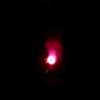Edited by fflach, 25 September 2010 - 03:06 PM.

Chlorine donors
#1

Posted 25 September 2010 - 03:03 PM
#2

Posted 25 September 2010 - 06:08 PM
Or you could write down the formulas and we can see what it looks like
#3

Posted 25 September 2010 - 06:26 PM
Depending on your formula, you want to use 80% parlon vs saran and use more oxidant for the difference. The effect will be pretty much the same, but parlon makes long burning stars.
#4

Posted 25 September 2010 - 08:43 PM
#5

Posted 25 September 2010 - 09:00 PM
#6

Posted 26 September 2010 - 04:29 AM
It's a matter of parlon having more fire retardant properties and saran bering more combustible rather then the chlorine content. Generally speaking the chlorine donors are up to 15% and never more.
I disagree with the bit about never more than 15% Chlorine donors. certainly in organic stars adding this much may cause problems, but with MgAl fueled colours, adding more chlorine donor is not only possible, but in my opinion, usually beneficial. When I look at a formula, I consider high chlorine donor content to be a very good thing, and 20% is not very excessive.
My current green, for example contains plenty of parlon, but burns fiercely and cleanly. I guess MgAl is very important to having a higher chlorine donor content.
60% Barium nitrate
18% Parlon
15% MgAl
4% Rosin
3% Sulfur
I've never personally tried Saran, but from reading around it seems like the biggest difference that you will get in most formulas, is that Saran burns faster.
Unless the star is particularly delicate, I really cannot see swapping the two making a problematic difference in formulas. If it does cause an undesirable change, a small amount of tweaking should easily get it working well.
#7

Posted 26 September 2010 - 08:11 AM
So how much of a fire retardant is Palon compared to other Chlorine donors ? Is it an advantage when working with blues in keeping temperatures down?
It gives pretty much residues, but together with a metallic fuel it will not be much of a retardant; even less so with a chlorate as an oxidizer.
used for sundry preparations, and especially for experimental
fire-works."
Dr. James Cutbush
#8

Posted 26 September 2010 - 09:58 AM
and as I don't have the 11% Saran that is called for in the formula, but use Parlon instead, but up it by say 1% to keep the Chlorine balance. The formula in question is on Passfire,
I don't know if I am at liberty quote it here but it has the intriguing name of (453.5 Nanometer Emission Spectra Blue)
#9

Posted 26 September 2010 - 11:23 AM
I was thinking, with Saran giving 73% chlorine content and Parlon giving between 64%-68%,
and as I don't have the 11% Saran that is called for in the formula, but use Parlon instead, but up it by say 1% to keep the Chlorine balance. The formula in question is on Passfire,
I don't know if I am at liberty quote it here but it has the intriguing name of (453.5 Nanometer Emission Spectra Blue)
I never tried saran, so I don't know, but parlon is a good chlorine donor in combination with a powerful oxidizer and fuel respectively.
I substituted hexachloroethane for hexachlorobenzene in Chinese Blue #1 with a very good result, and there the difference in chlorine content is really huge, although both of those are very volatile, while saran, parlon, pvc etc are stable chlorinated rubbers/plastics.
Edited by Pyroswede, 26 September 2010 - 11:25 AM.
used for sundry preparations, and especially for experimental
fire-works."
Dr. James Cutbush
#10

Posted 26 September 2010 - 10:08 PM
I can garauntee it will work brilliantly...
#11

Posted 27 September 2010 - 09:25 AM
BTW, just reading a russian chem hazards database and HCE is listed as something you can eat by the spoon literally, listing volunteers who presumably gulped as much as 30 grams without ill efect other than some smelly burps.
Not that I'd try it myself.
#12

Posted 27 September 2010 - 10:54 AM
used for sundry preparations, and especially for experimental
fire-works."
Dr. James Cutbush
#13

Posted 27 September 2010 - 08:08 PM
It would be really good to know your thoughts on chlorate and perchlorate oxidisers, many say you can't beat chlorate in colour formulas is this the case and why?
Sorry if I'm being a bit random.
#14

Posted 27 September 2010 - 09:13 PM
1. potassium nitrate , 3 oxygen atoms decomposes at 400 oc
2 potassium chlorate ,3 oxygen atoms again decomps at 400 oc, but contains chlorine.
3 potassium perchlorate, 4 oxygen atoms , decomps 600 oc, again contains chlorine
my understanding is whilst the perc as more oxygen, the oxygen from the chlorate is more readily available at a lower temp , giving a cooler flame ideal for blues
Edited by chris m, 27 September 2010 - 09:36 PM.
#15

Posted 27 September 2010 - 09:29 PM
1 user(s) are reading this topic
0 members, 1 guests, 0 anonymous users













